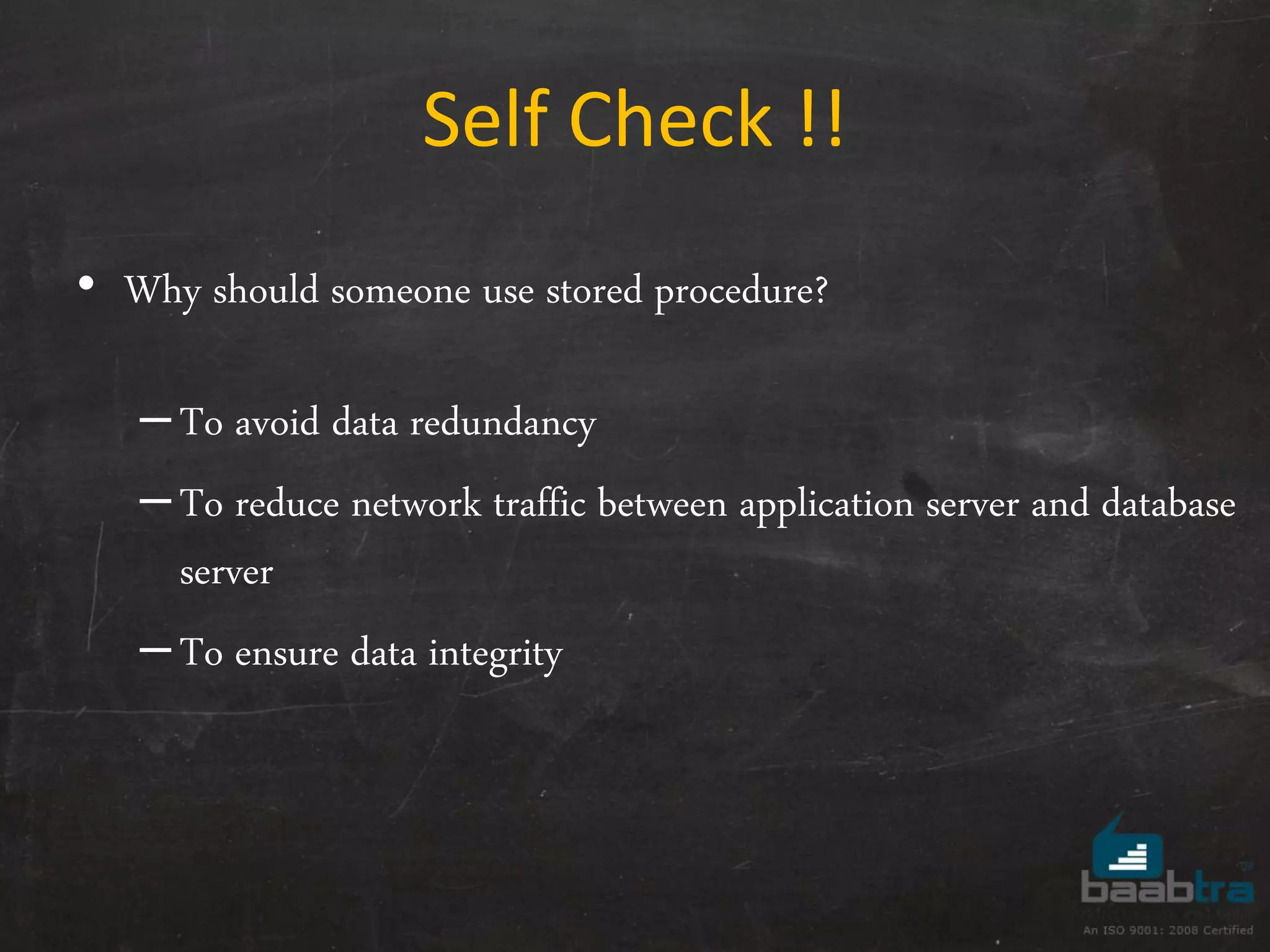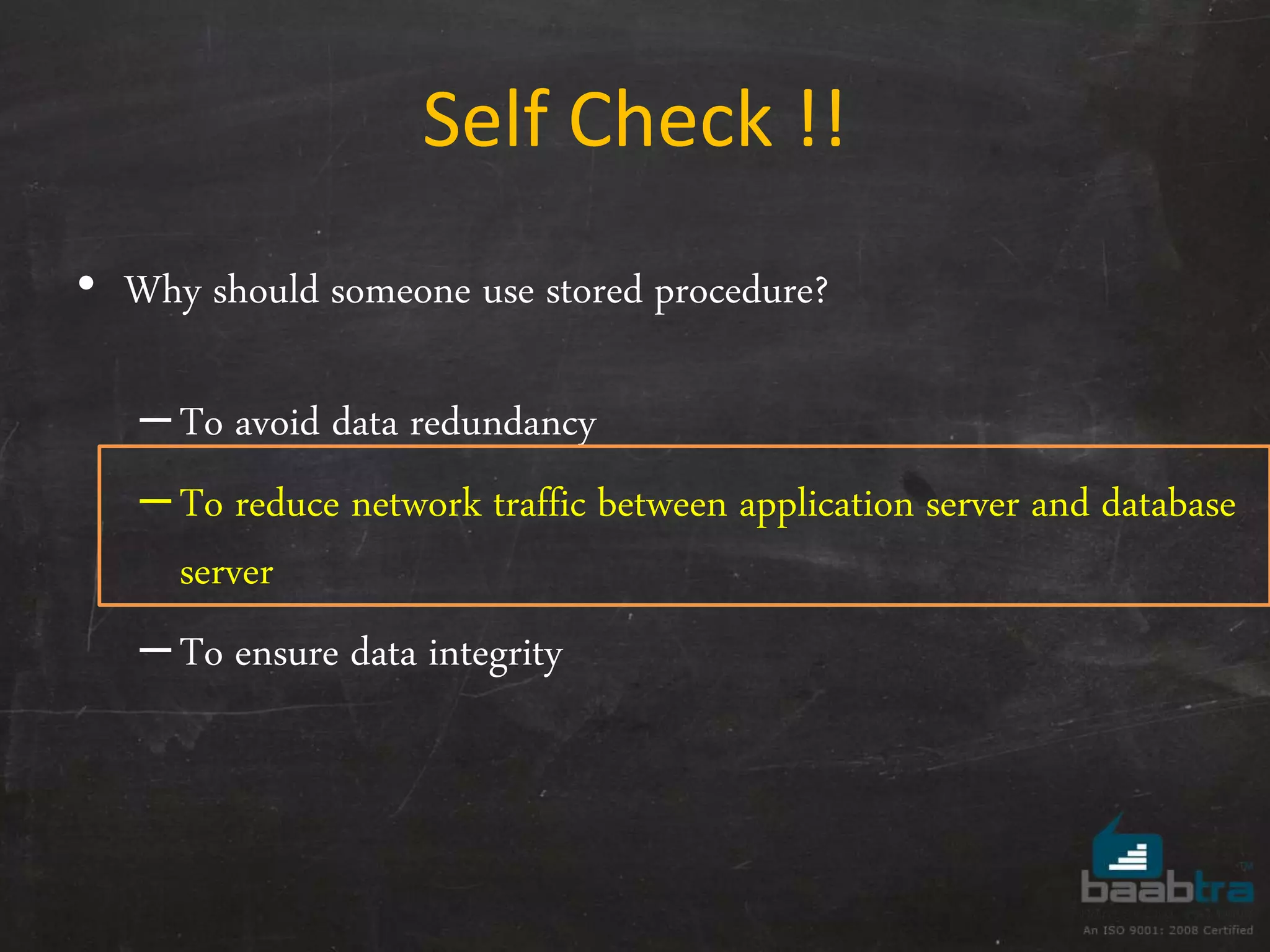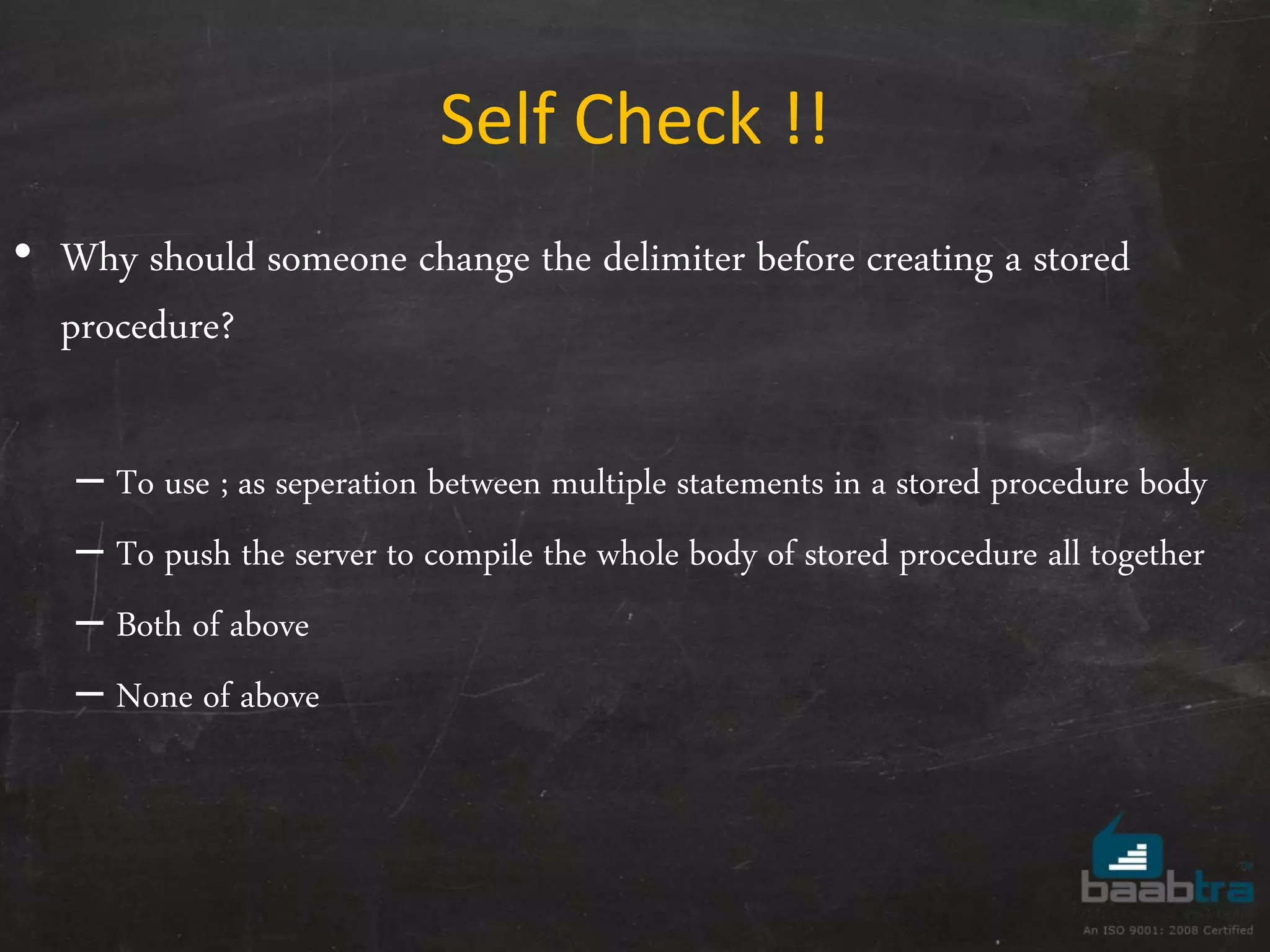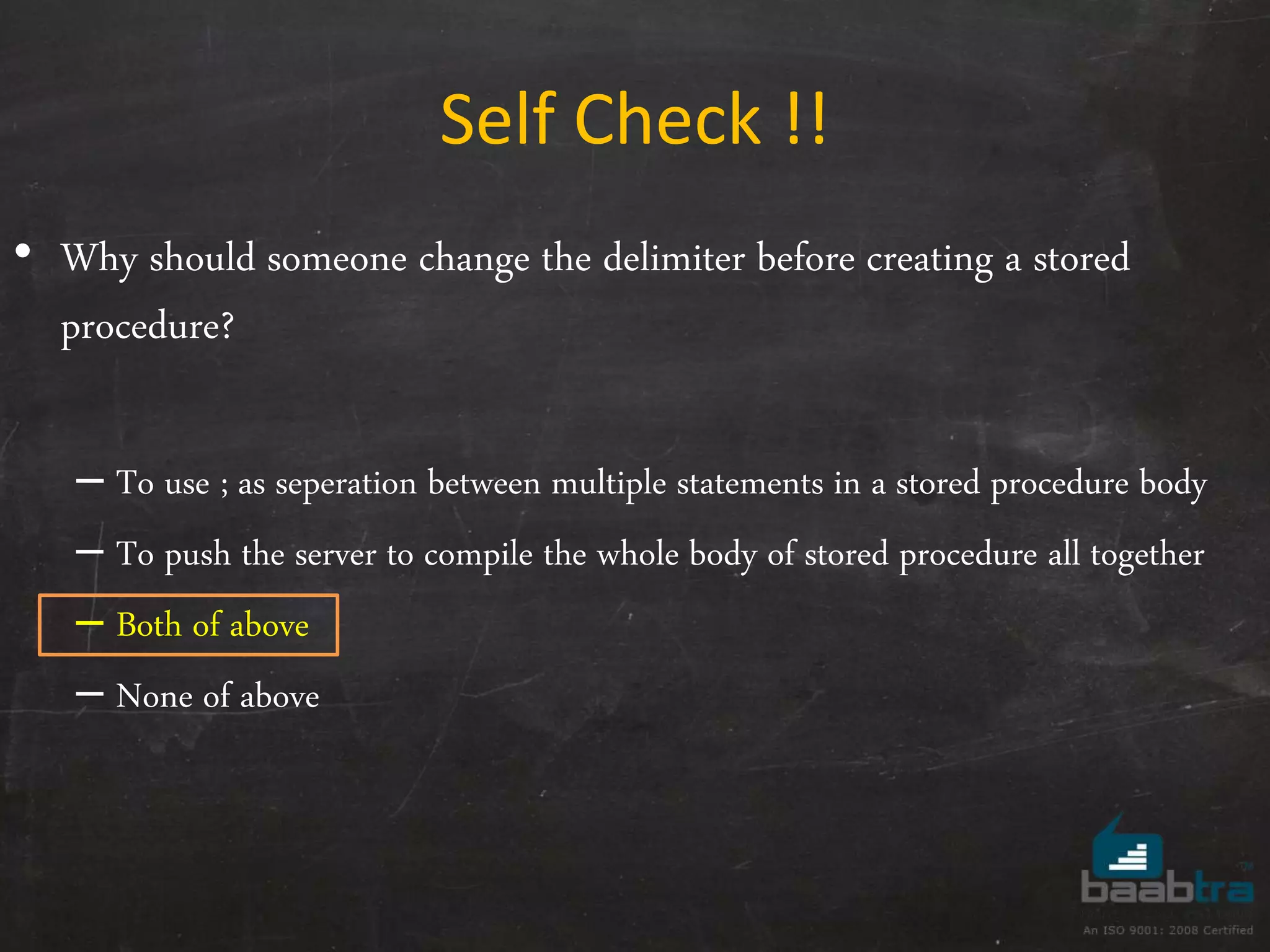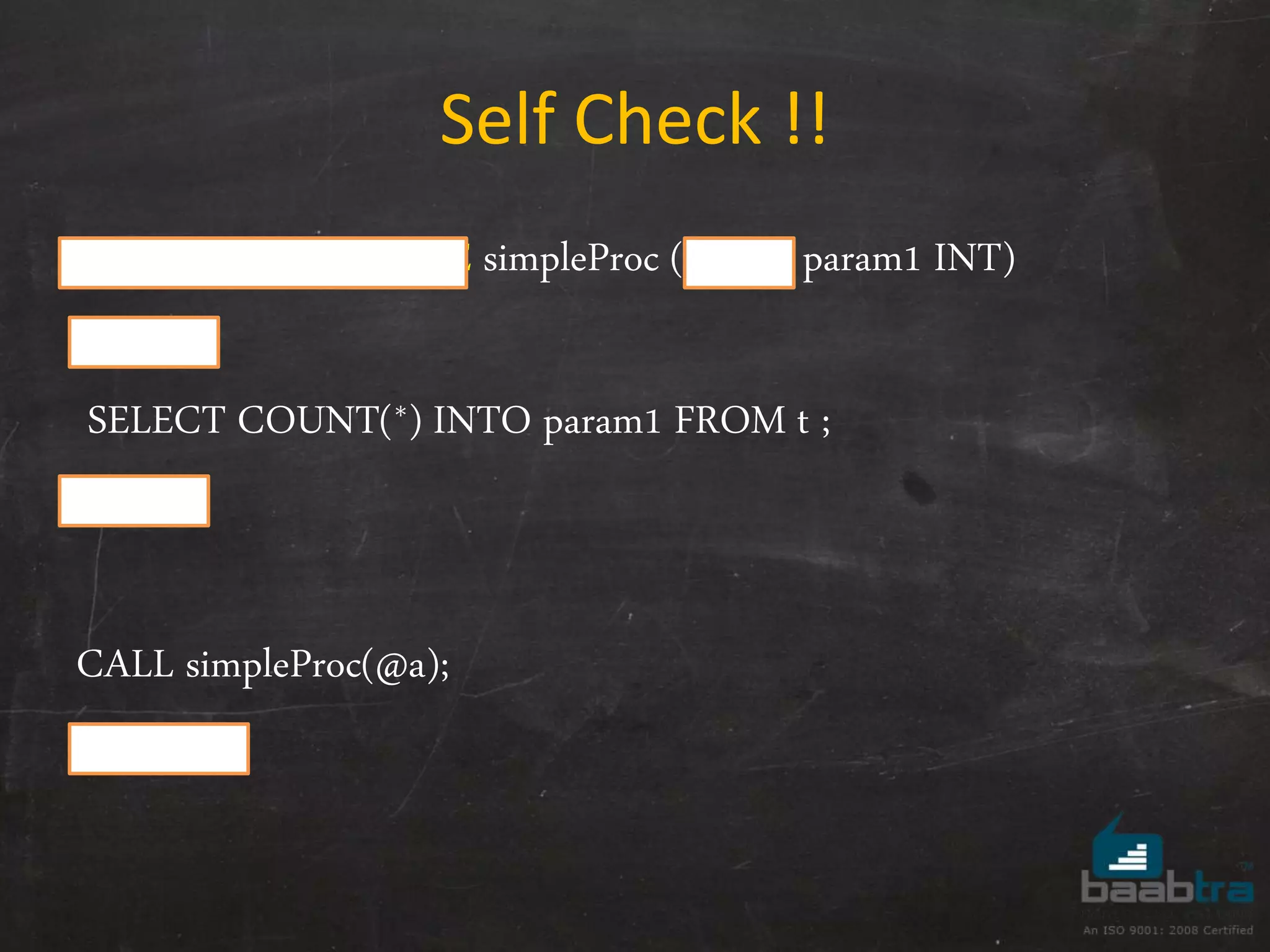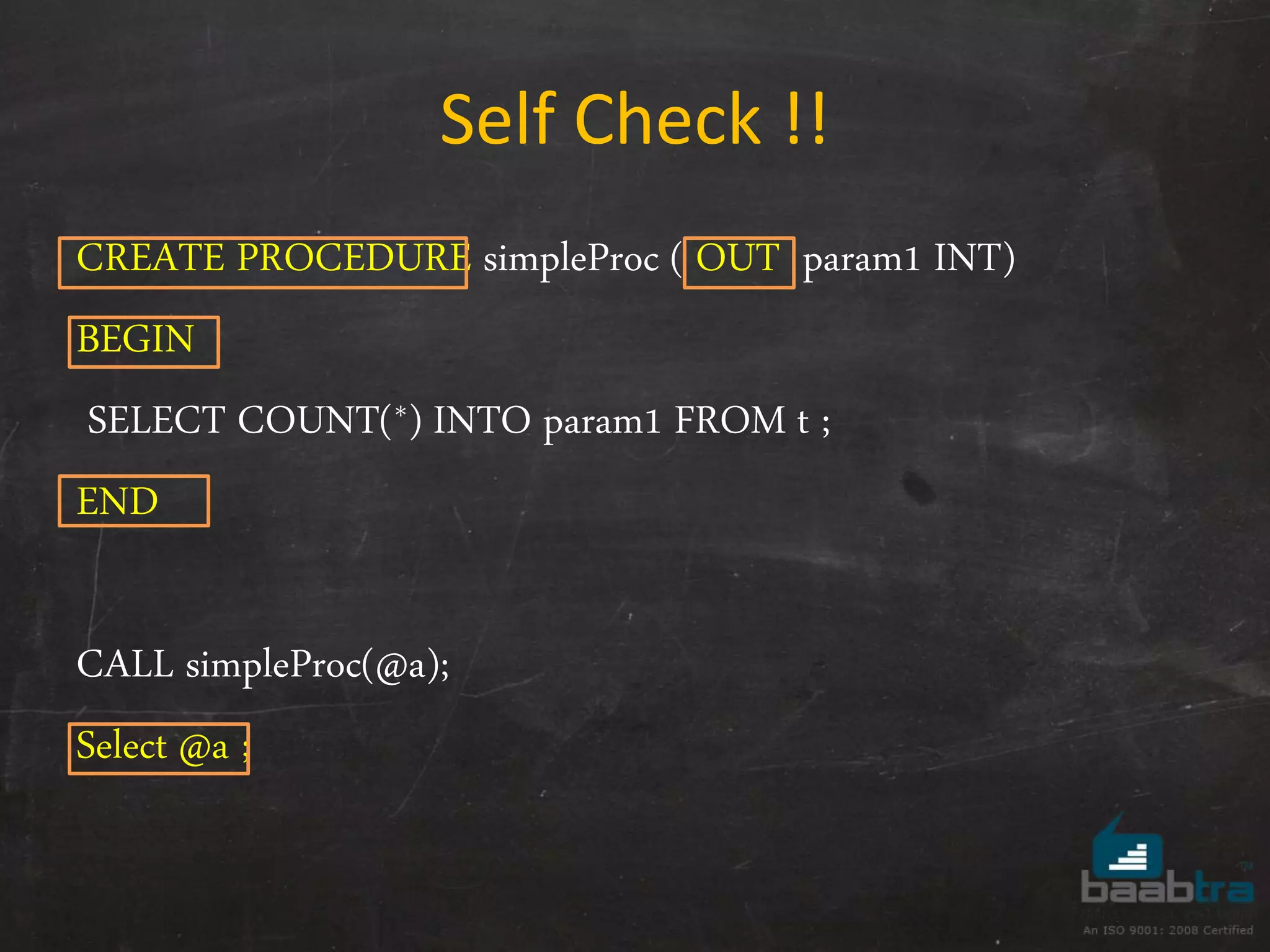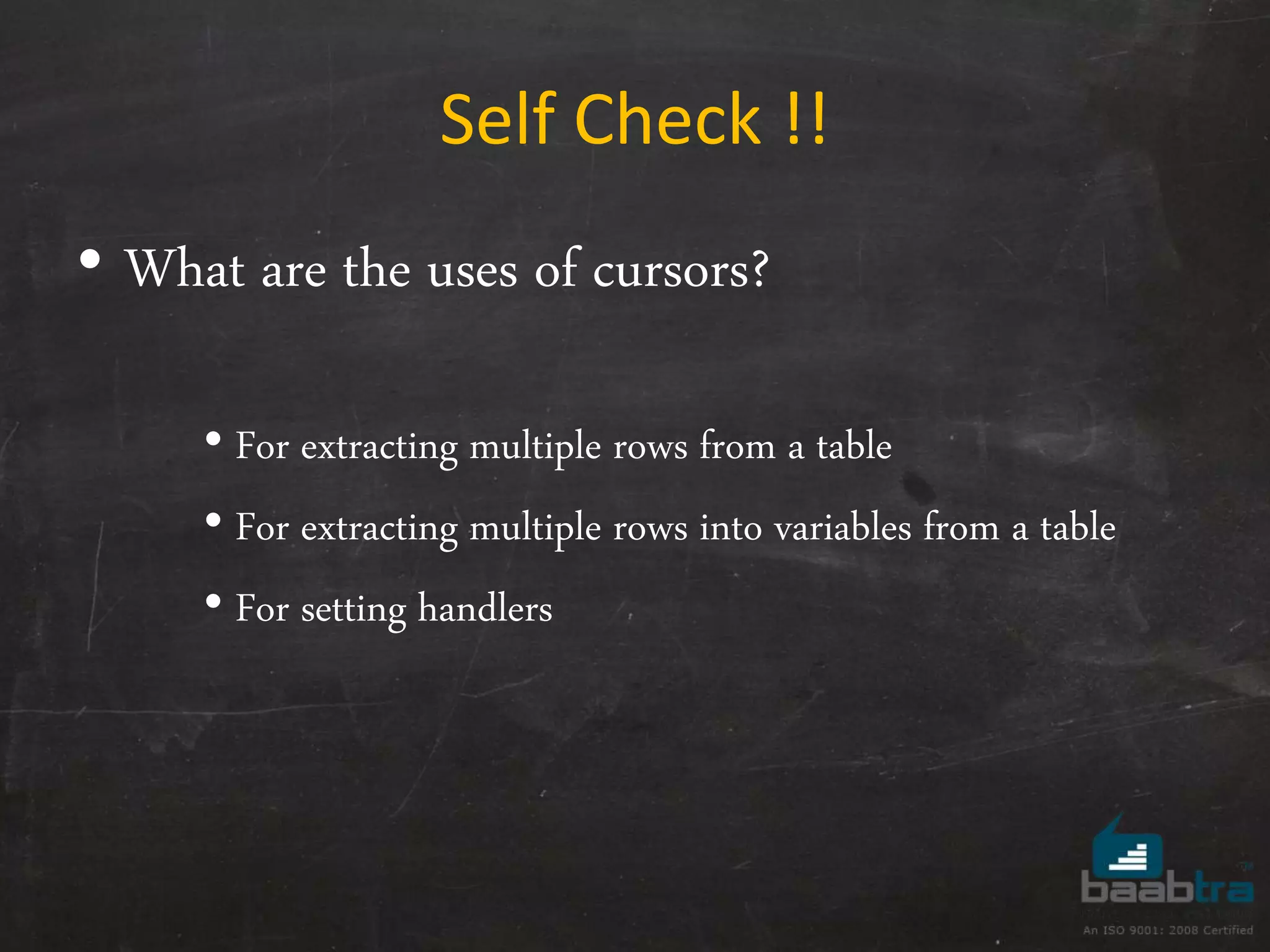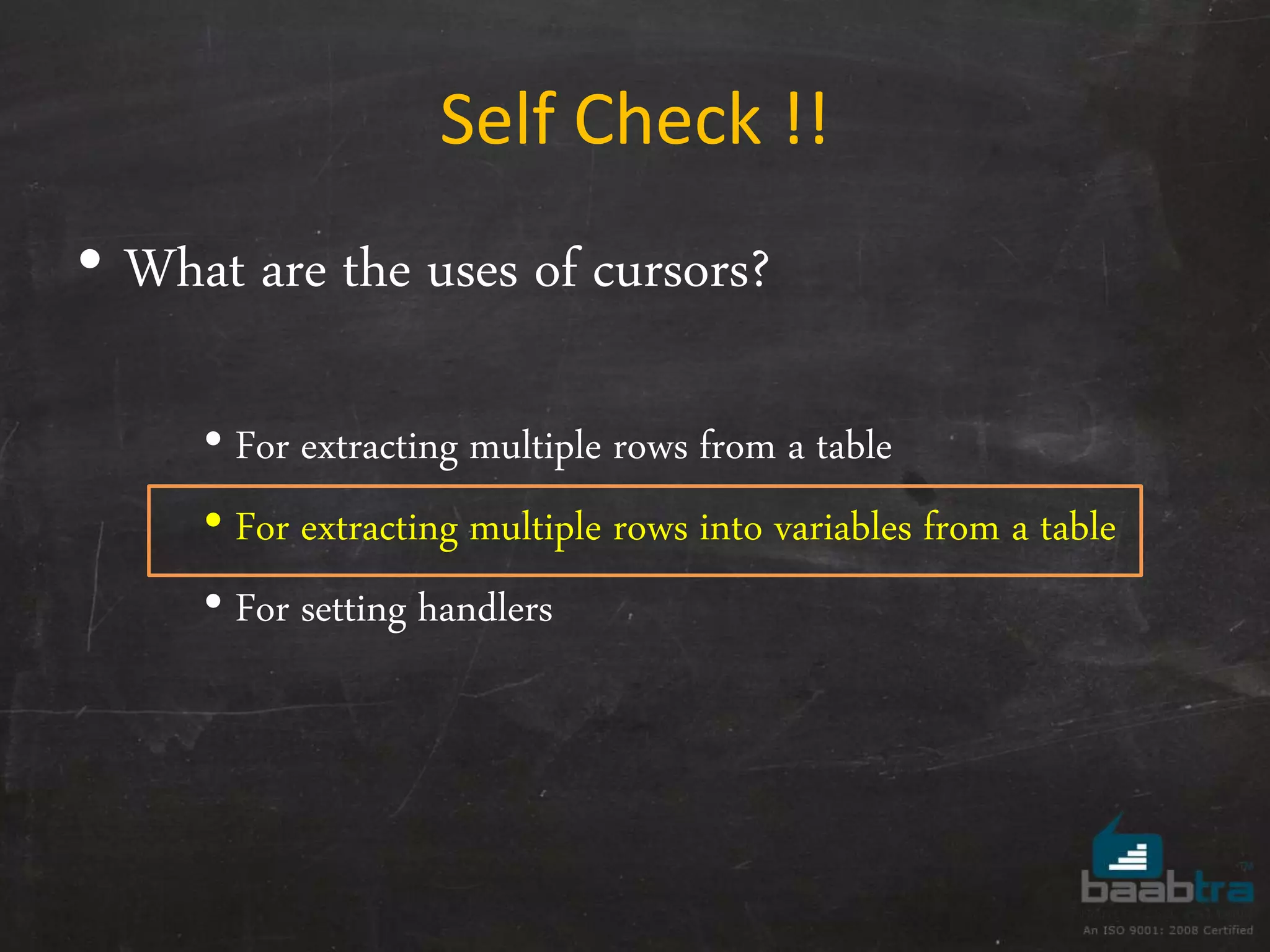The document provides information about stored procedures in databases: - A stored procedure is a way to encapsulate repetitive tasks like queries into reusable code blocks stored in the database. - Stored procedures offer advantages like precompiled execution for improved performance, reduced network traffic, code reuse, and enhanced security. - The example shows how to create a stored procedure using delimiters to change parsing behavior and pass parameters to a procedure. Cursors allow fetching multiple rows from a result set into variables.
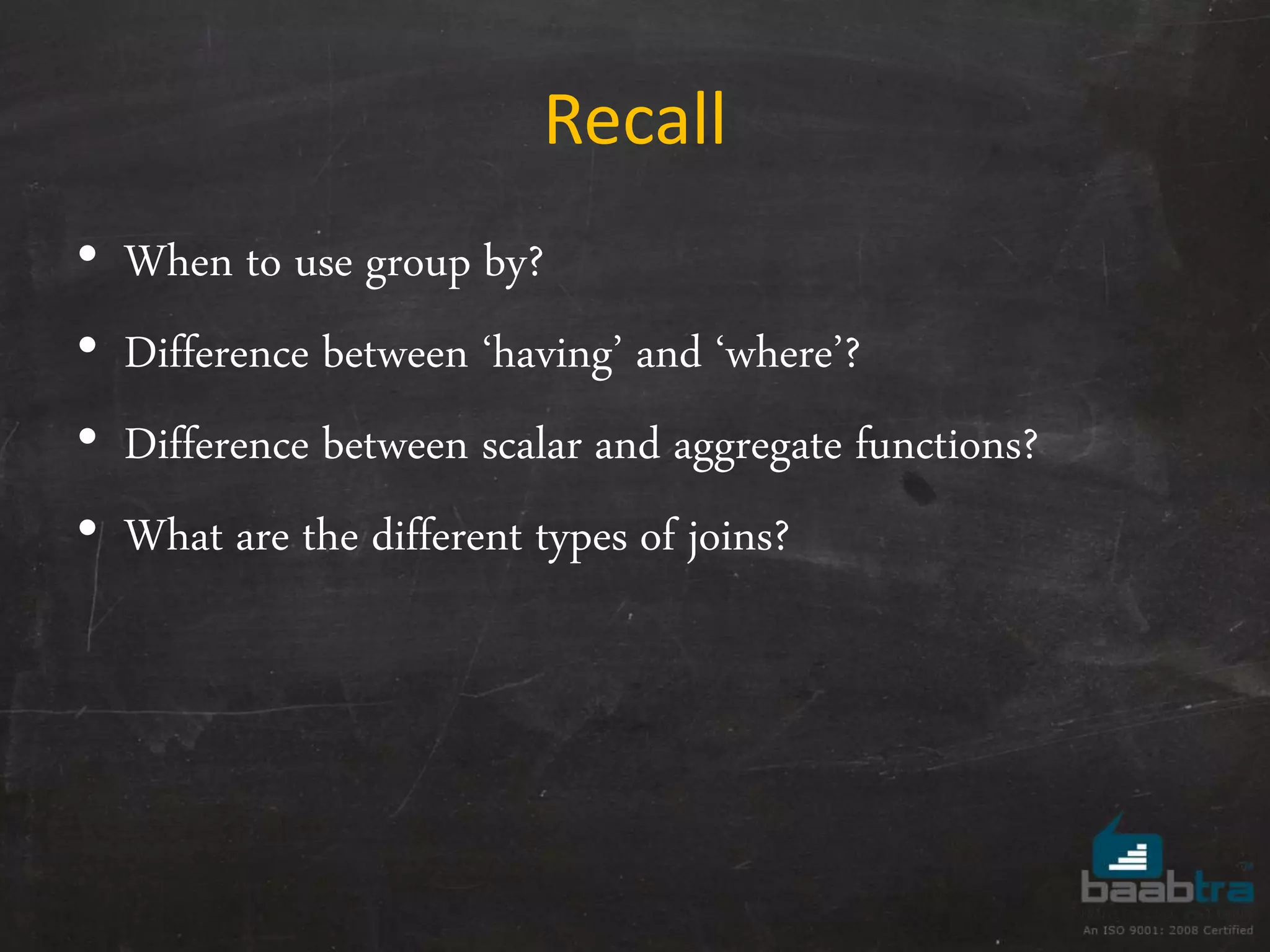
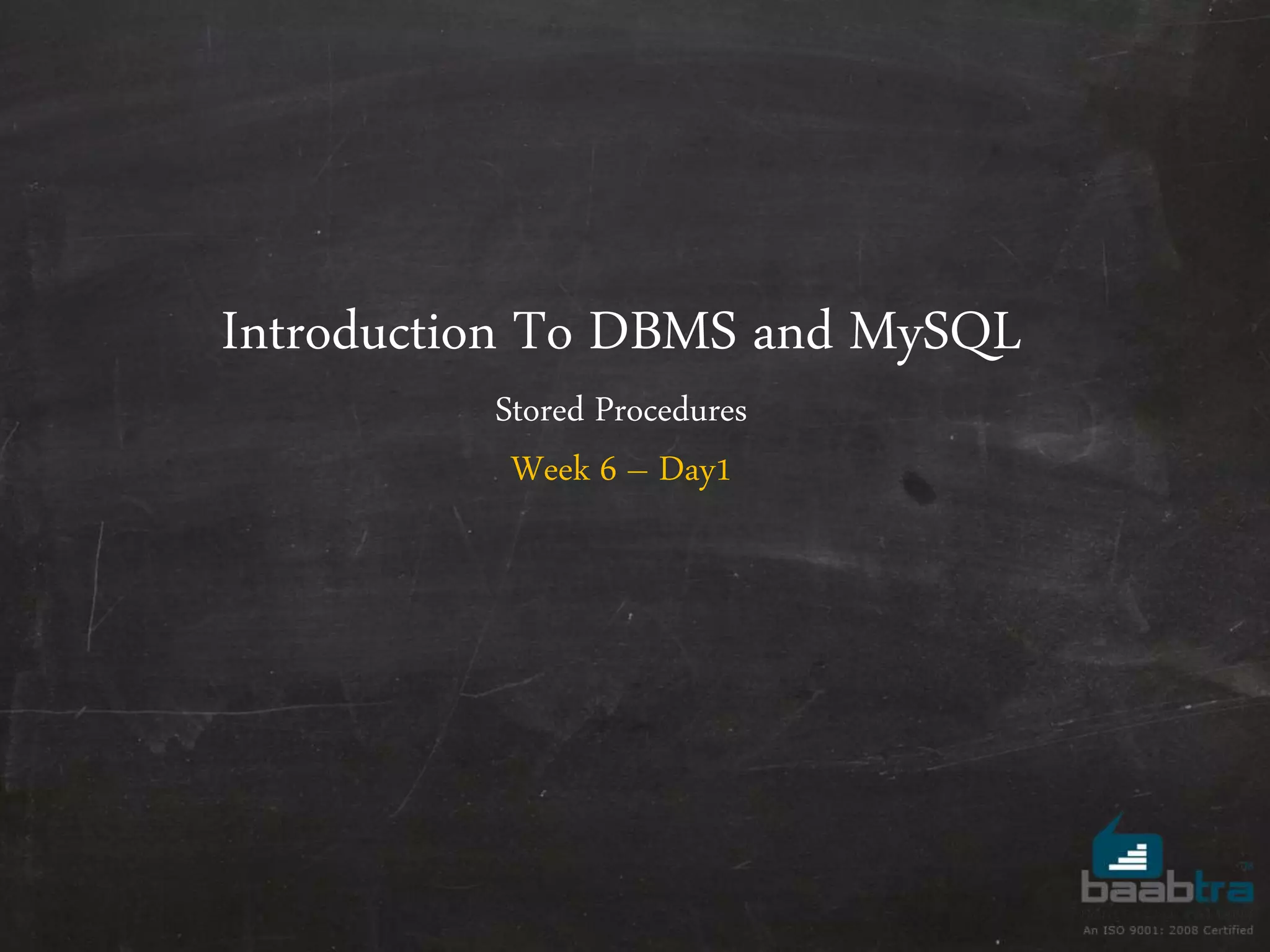


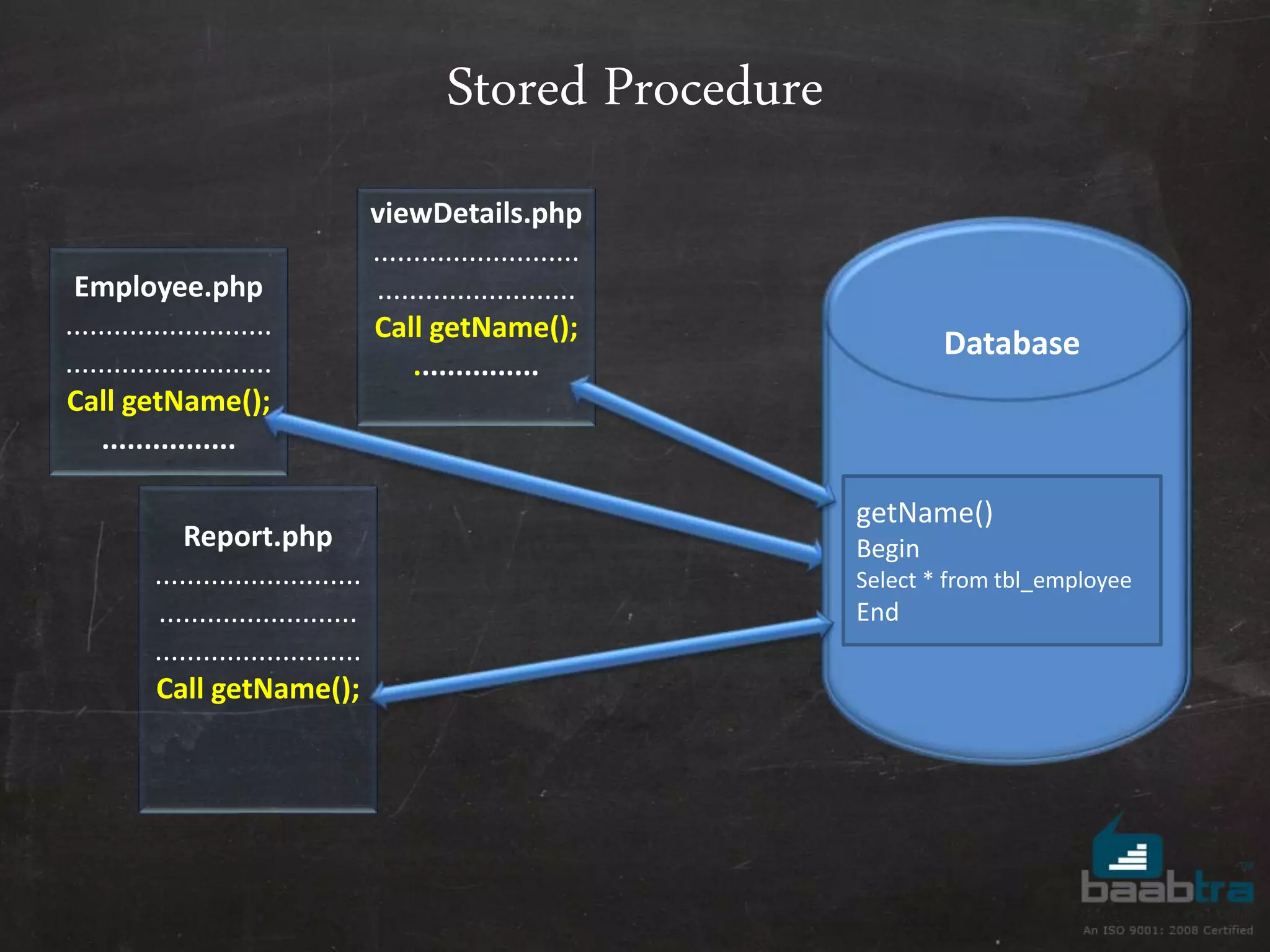
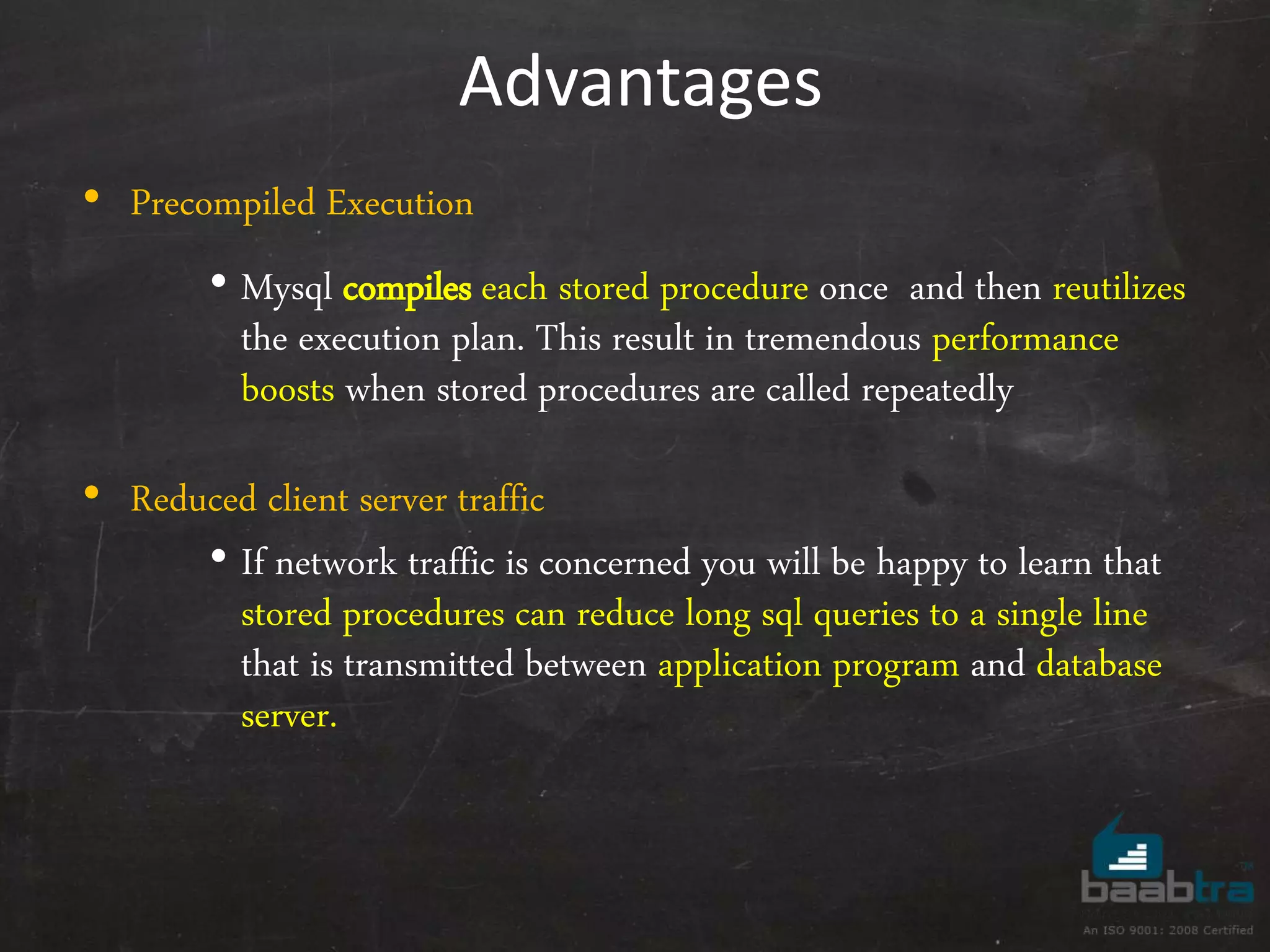

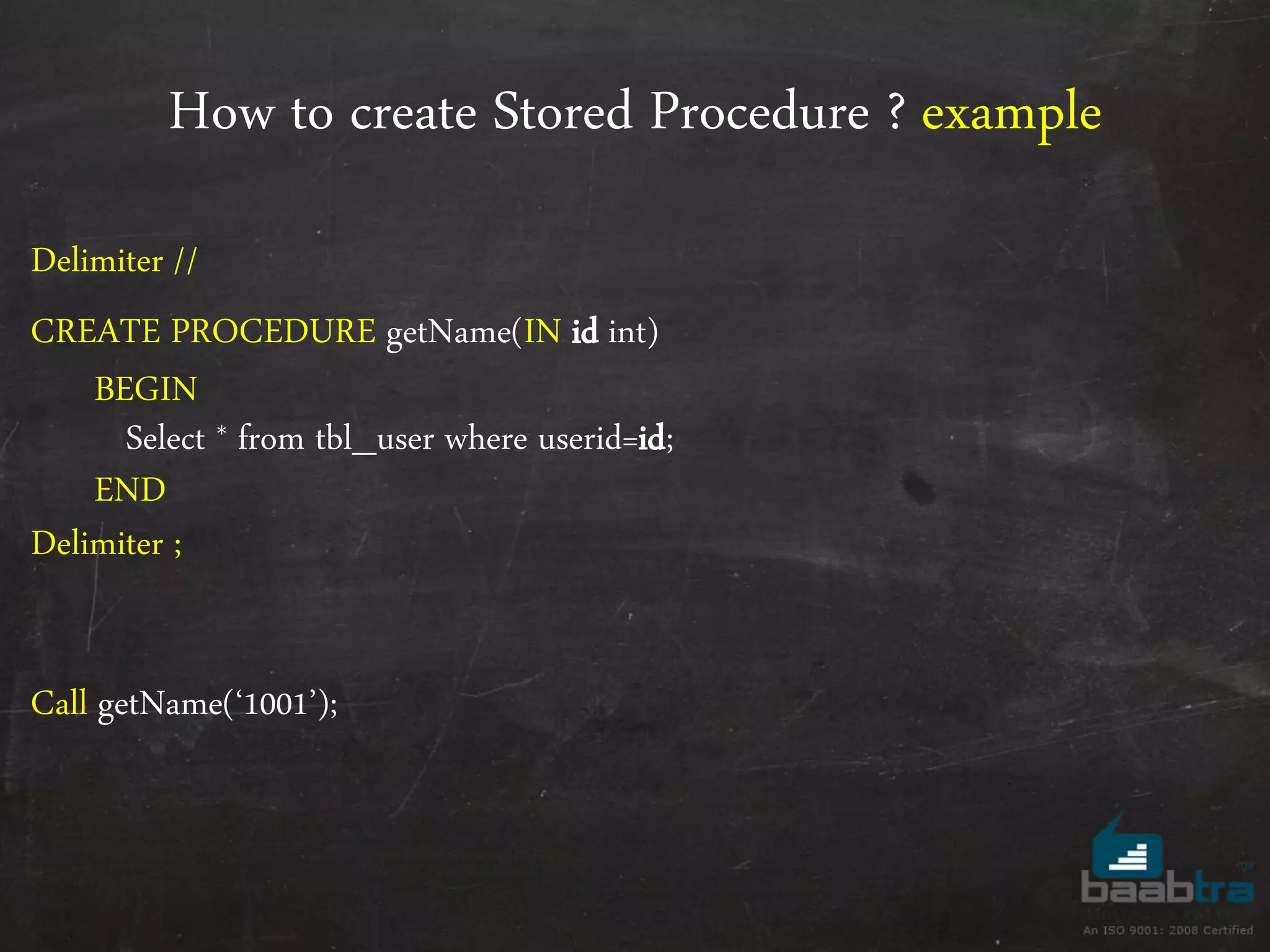

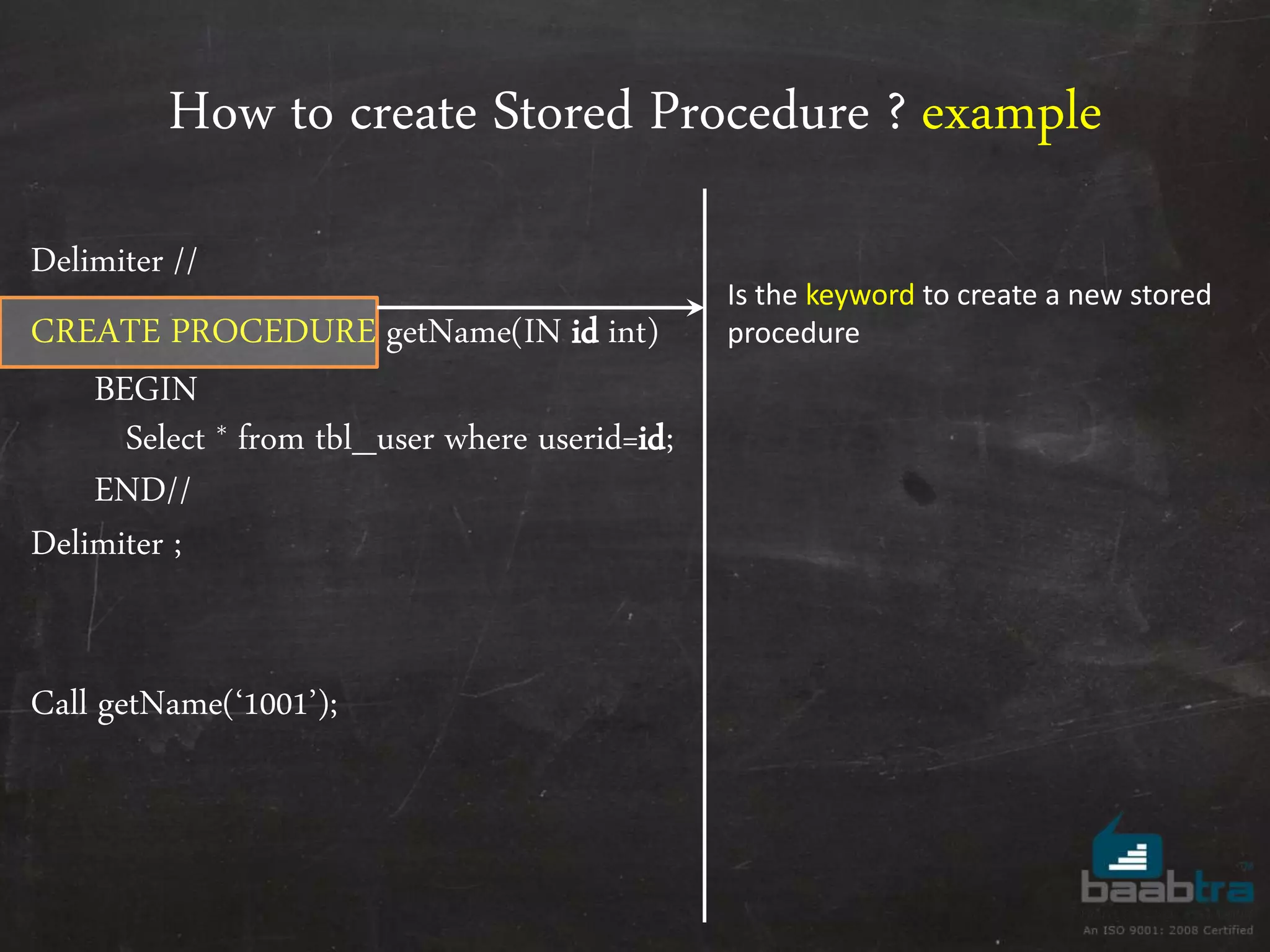


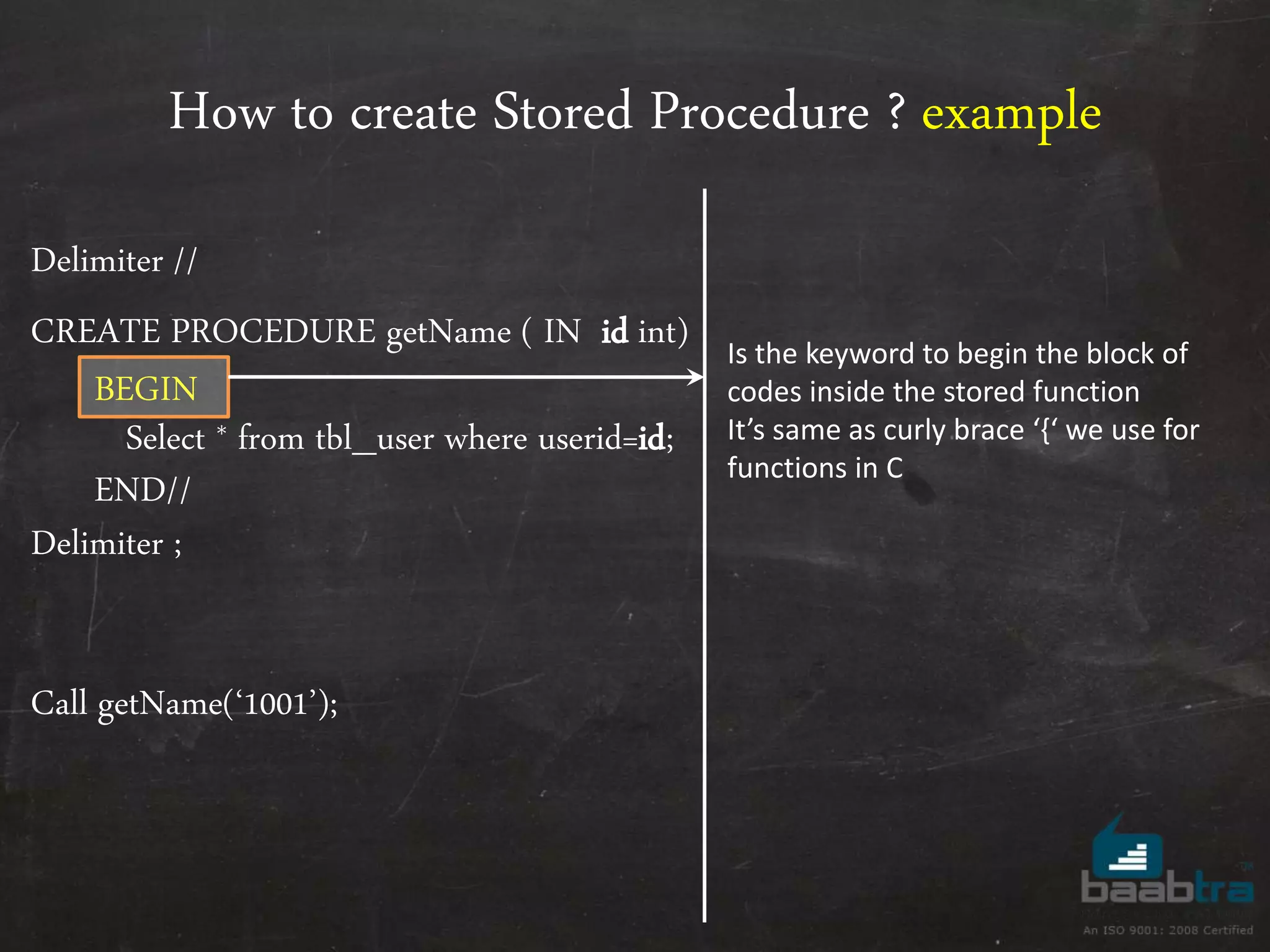

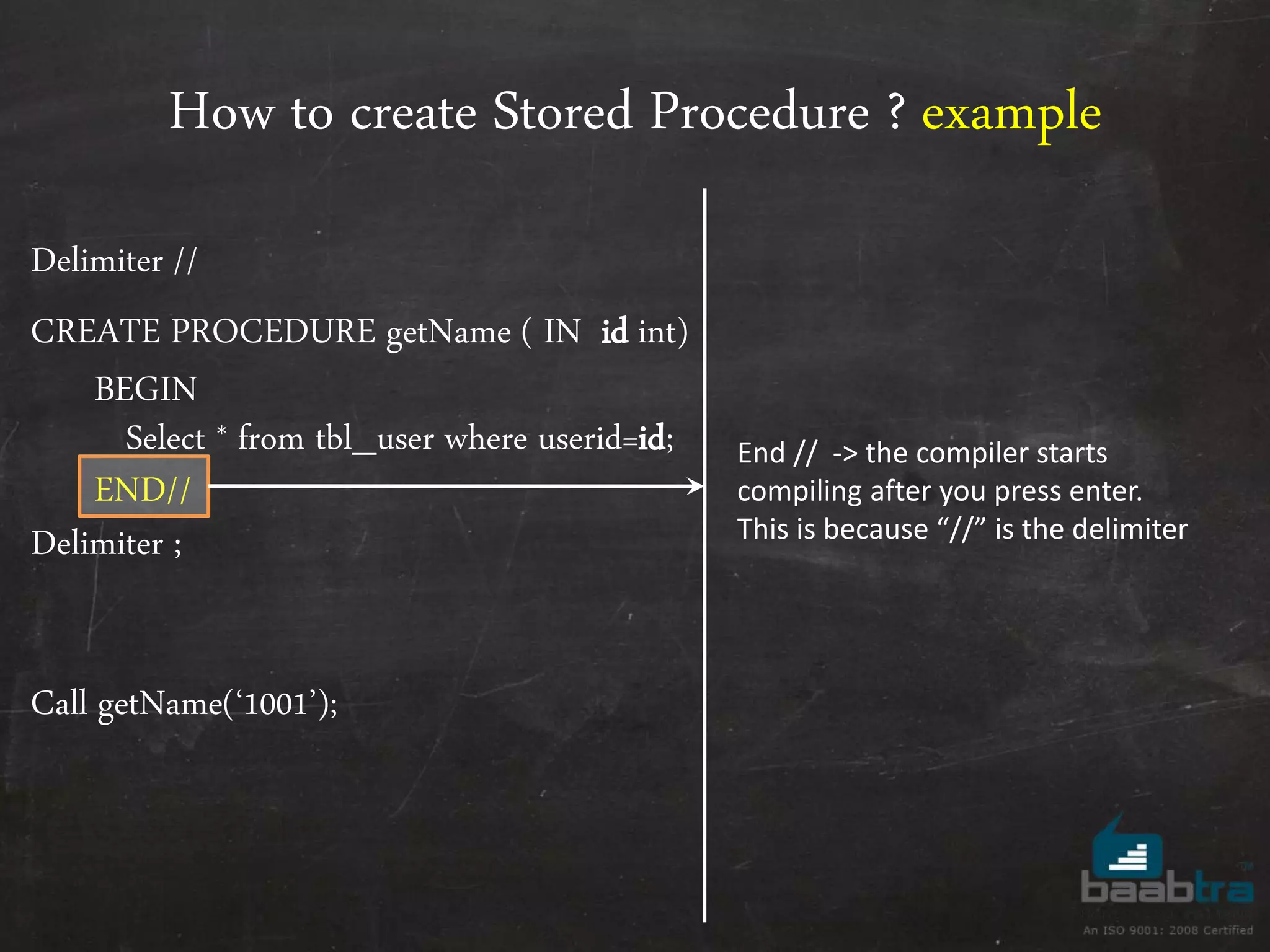
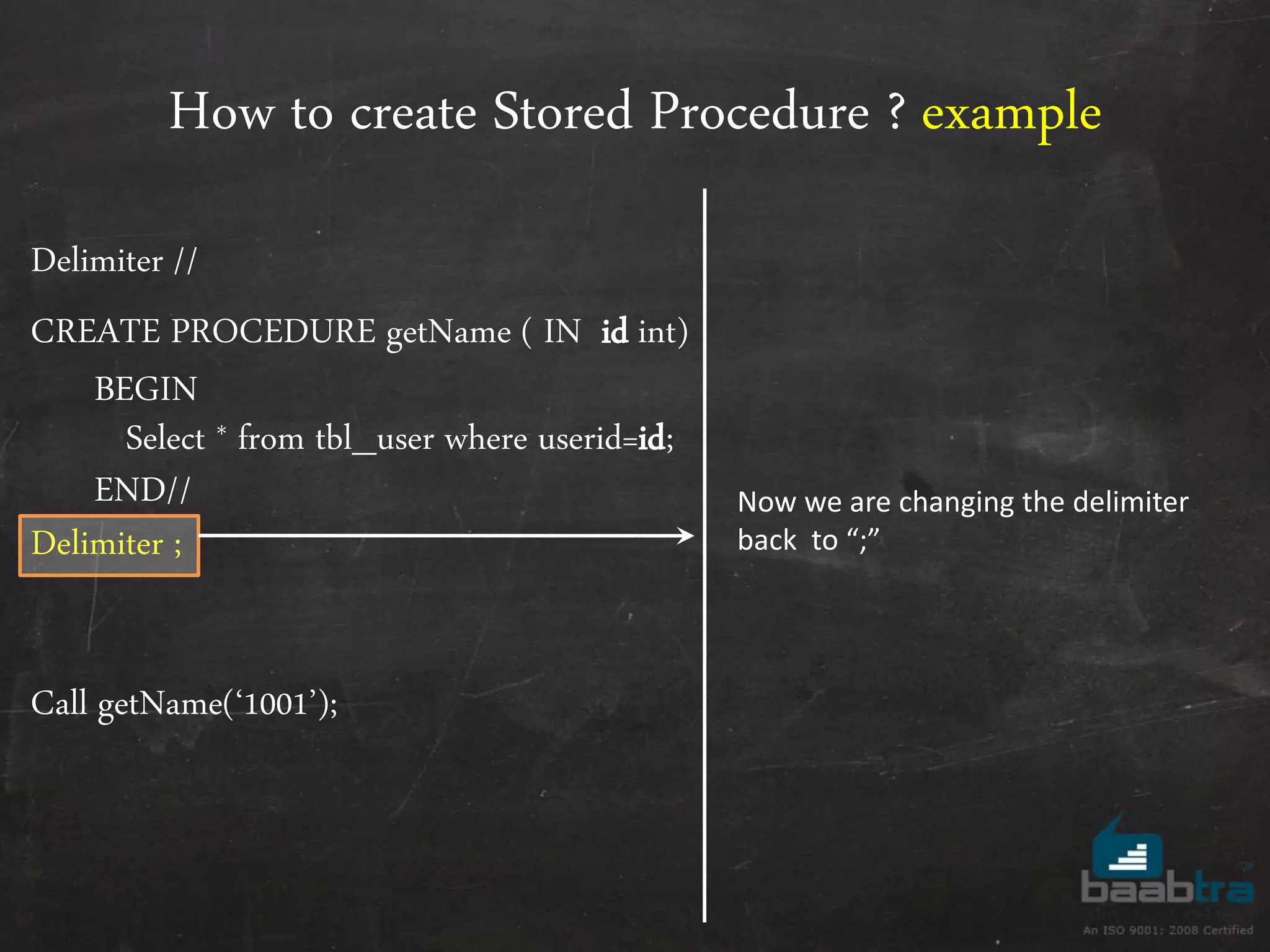

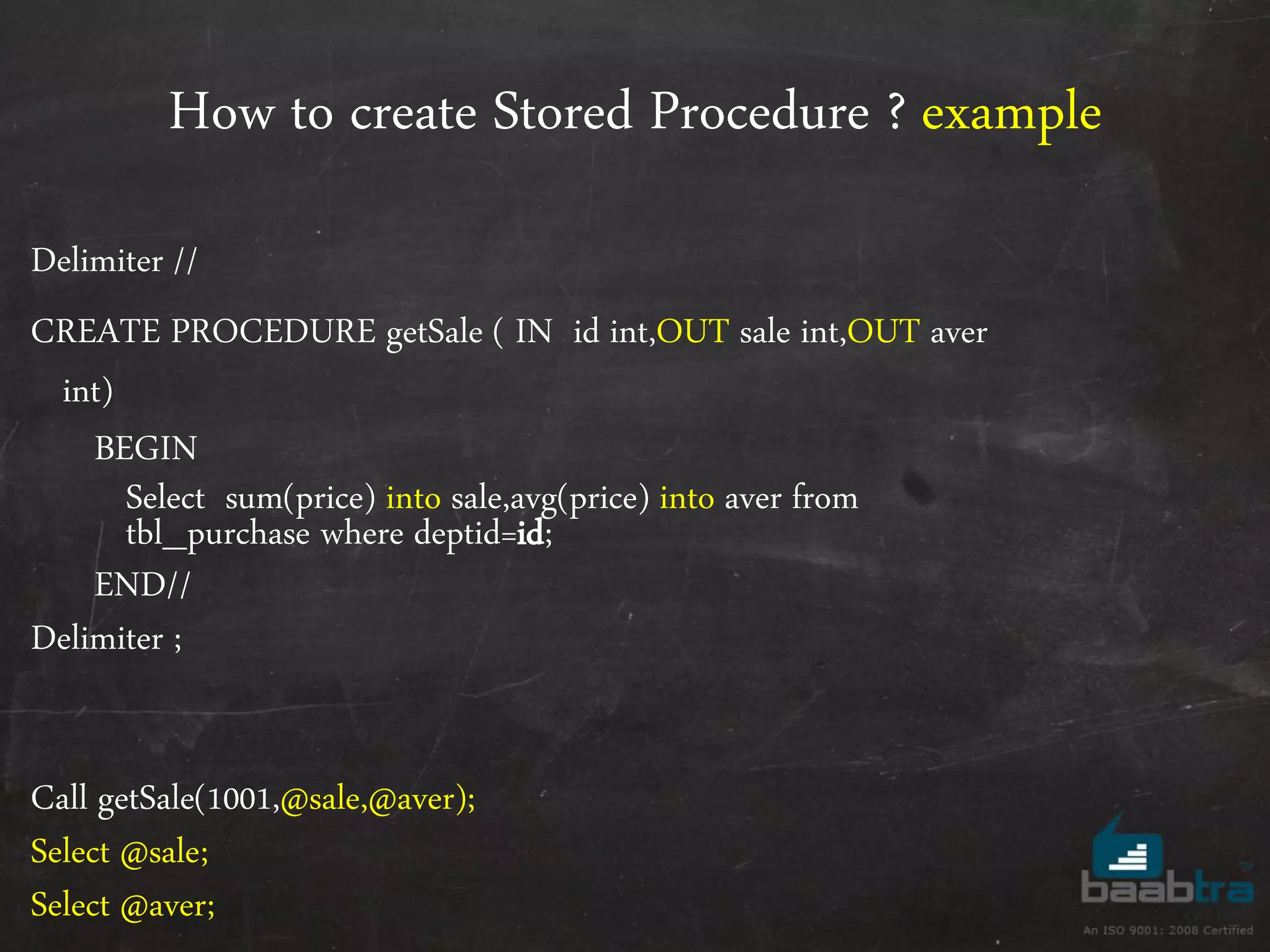
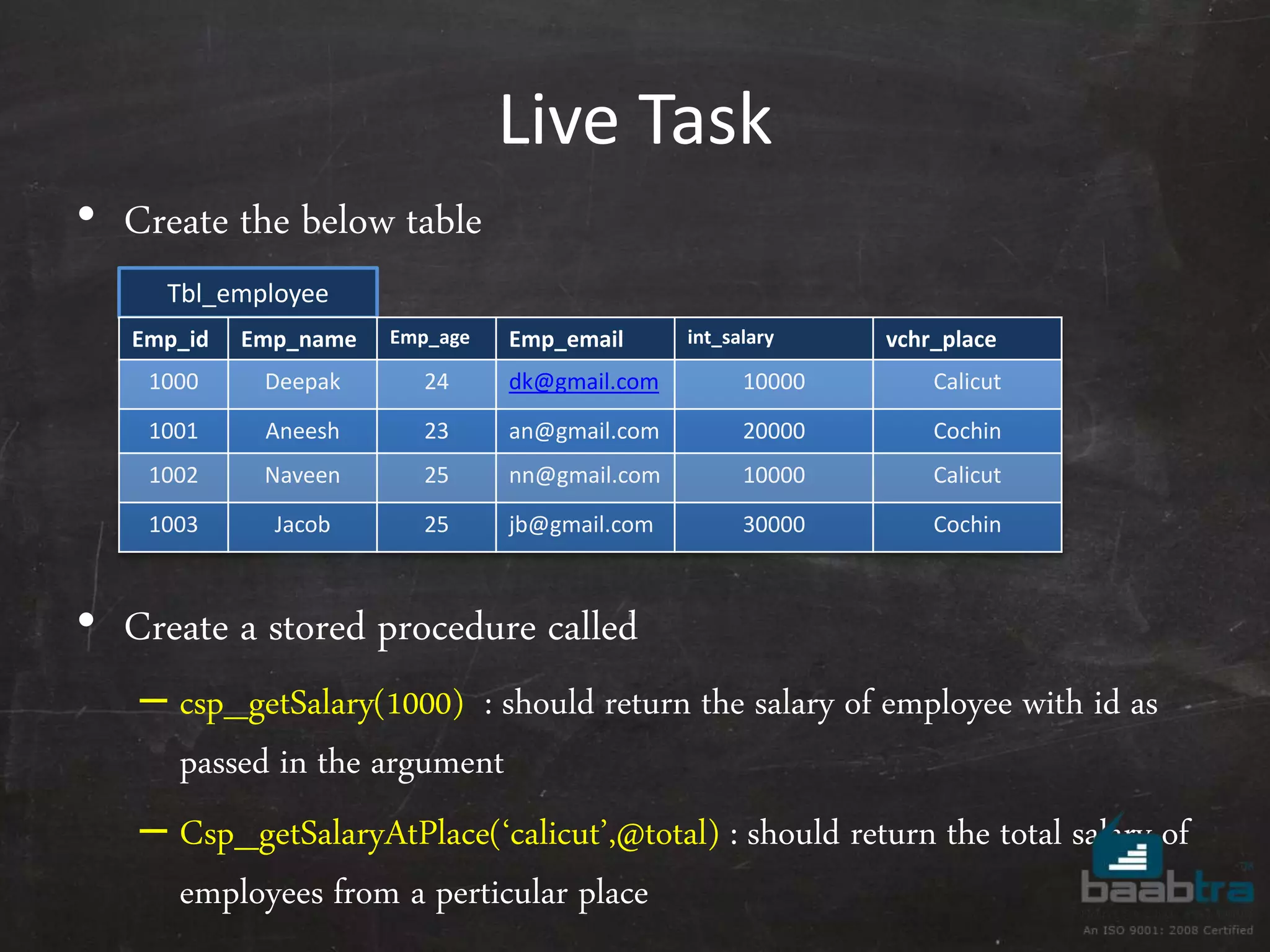
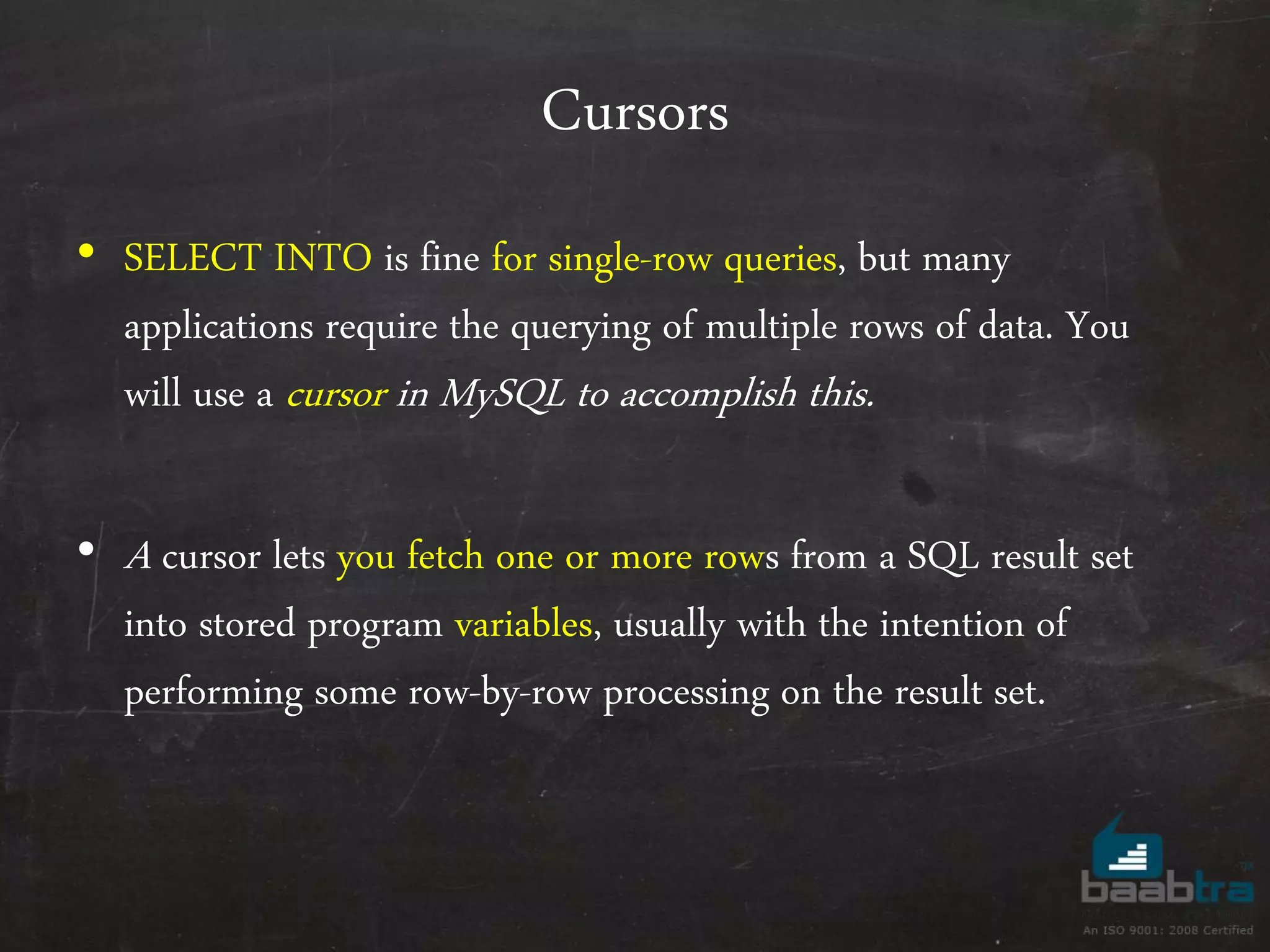
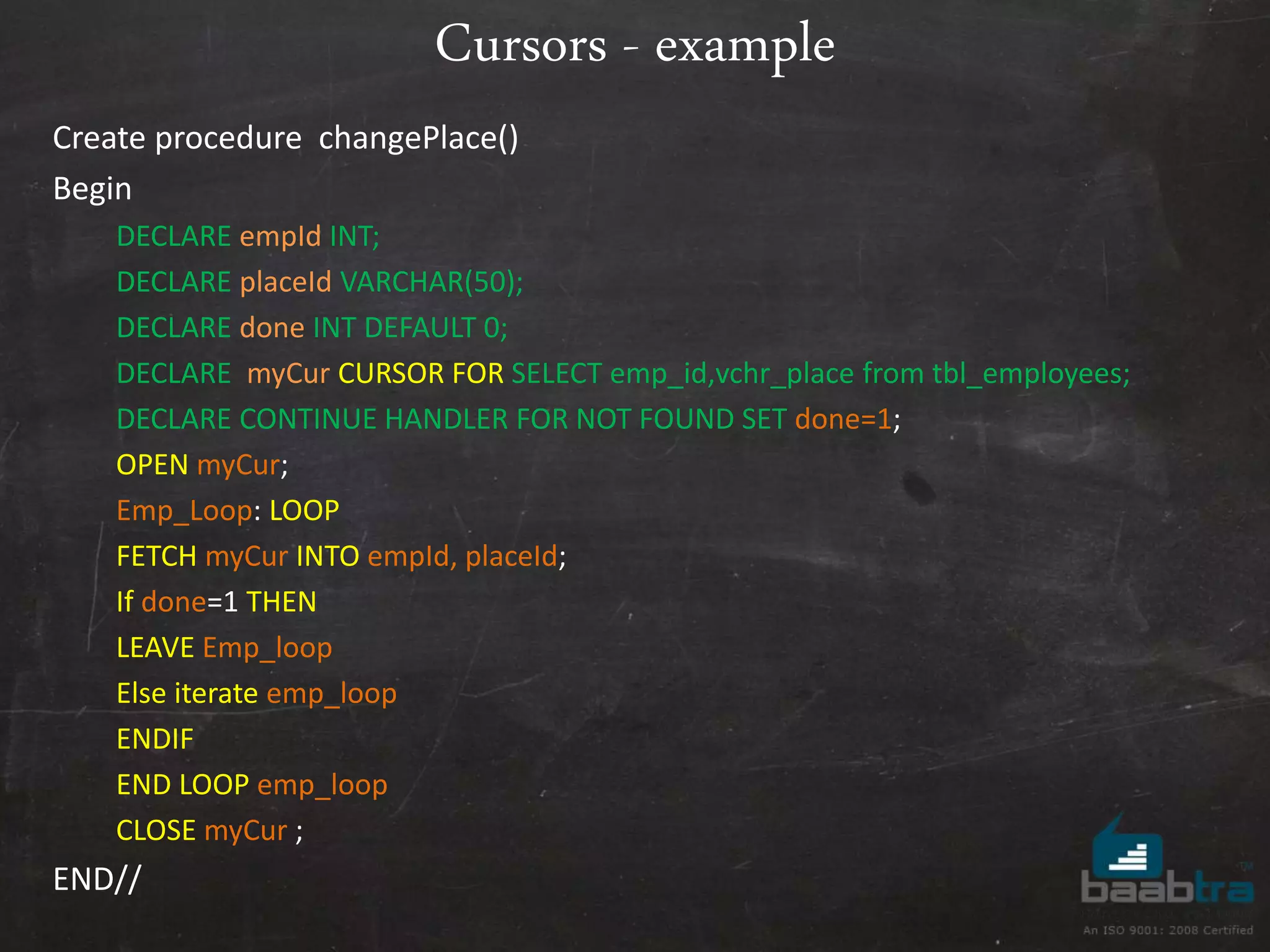
![Declare Handler • The DECLARE ... HANDLER statement specifies a handler that deals with one or more conditions. If one of these conditions occurs, the specified statement executes. • DECLARE handler_action HANDLER FOR condition_value [, condition_value] ... Statement – handler_action: – CONTINUE | EXIT | UNDO – condition_value: mysql_error_code – SQLWARNING | NOT FOUND | SQLEXCEPTION](https://image.slidesharecdn.com/introductiontomysqlpart3-140329022314-phpapp01/75/Introduction-to-mysql-part-3-22-2048.jpg)


